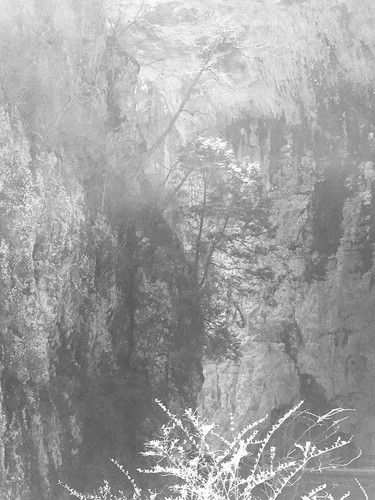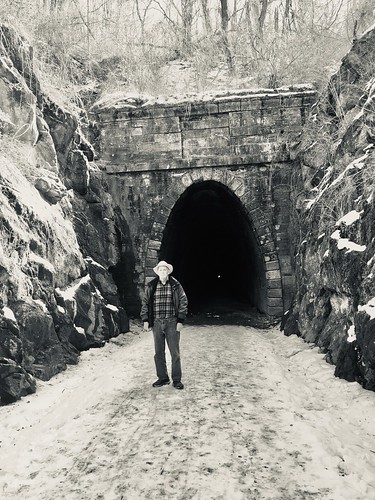 Volume XX, Issue VI: Robin Lee Graham
The Boy Who Sailed Around the World
Volume XX, Issue VI: Robin Lee Graham
The Boy Who Sailed Around the World
[click to read]
Robin Lee Graham's Incredible Journey
 Sixteen year old Robin Graham circumnavigated the globe.
O
Sixteen year old Robin Graham circumnavigated the globe.
On his sixteenth birthday, March 5, 1965,
Robin Lee Graham said to his mother and father:
"Know what I'd really like a boat of my own that I could sail to the South Pacific islands."
Most parents, upon hearing such talk, would dismiss it as impetuosity, but four and a half months later Robin stepped aboard his own 24 foot fiberglass sloop,
Dove, a light displacement craft usually regarded as a day-sailor, and shoved off from Los Angeles for a shakedown cruise to Hawaii, a passage that took 22 1/2 days and was a piece of cake all the way.
Alone except for a pair of kittens, he entertained himself most of the way with his guitar and folk tunes, navigating the 2,230 nautical miles with the aplomb of a veteran topgallant hand. It was so easy, in fact, that once in the islands, it seemed the most natural thing in the world just to keep going on around. At first, he hoped to find a companion to share the adventure, but few schoolboys have parents as lenient as were Robin's mother and father. Then he made up his mind to do it alone, just as had Captain Slocum back in 1895-1898. But where Slocum had made his voyage at the end of a long career at sea, Robin would be doing it at the beginning of his, and if successful he would become the youngest person ever to sail alone around the world.
So, at 11 A.M. on Tuesday morning, September 14, 1965, he said his good-byes again to his parents and departed Honolulu's Ala Wai yacht harbor. In spite of its small size,
Dove was easy to manage and had been modified for ocean voyaging. There was a small inboard engine, supplemented by an outboard with a long shank. A steering vane designed and built by his father had been installed. As for Robin, although a mere callow boy, he was far from inexperienced. During 1962 and 1963, with his mother, father, and older brother, he had helped crew the family 36-foot ketch,
Golden Hind, all through the Pacific islands. During that cruise, his father had taught him seamanship, celestial navigation, shipboard maintenance, and all the other skills so vital to bluewater voyaging. Robin was a good student, and along with his lessons, he acquired a deep love for the sea and sailing.
This background, then, explains why his parents were so
"lenient" and understanding. Moreover, sailing around the world had been a lifelong ambition of Robin's father, but World War II and then raising a family had intervened. Robin had often heard his father talk about this, and perhaps by some psychological osmosis had assumed responsibility for fulfilling the goal.
His family had helped him prepare for the voyage, besides furnishing the boat. They had collected charts and navigation materials, food and supplies, a camera and film for recording his adventures, and a tape recorder with which to make on the spot comments.
His father, it seemed, became more obsessed with the voyage than Robin, perhaps seeing it vicariously as his own. He threw himself into the preparations and outfitting, spending most of those last hectic weeks with his son. As Robin recalled later, it was a period when he and his father were the closest in their entire lives. Along with taking care of preparations, Robin's father had also become his manager and agent, and complex arrangements were made to sell the story of his circumnavigation to publications and broadcast media, and set up lecture tours. It was going to be one circumnavigation that made money or else.
The only malfunction on the passage to Hawaii had been the vane steering. This was rebuilt by his father. He had aboard a transistor radio for news and weather and the
WWVH time ticks. He later picked up a Gibson Girl war surplus emergency transmitter, which sends out an S.O.S. when cranked. He also had fishing gear, a .22 caliber pistol, and a large supply of recording tapes.(5) The newspapers prior to his departure, had called him the
"Schoolboy Sailor," and he was well aware that his voyage was unique and newsworthy. His frequent long sessions with the tape recorder revealed this adolescent sense of destiny.
Leaving Hawaii with only $75 in cash, he made a perfect landfall fourteen days later at the British-owned Fanning Island,(6) only 12 miles square and 1,050 miles down course. Robin was a competent seaman, and shooting sights with a sextant on a 24-foot cork was child's play for him. When on deck, he always wore a harness with lifeline. He kept the harness on at all times, even when in the bunk below, so that all he had to do when he came up on deck was snap the lifeline to it. The only times he failed to do this on the entire voyage, he fell overboard and narrowly escaped being left behind once in the Indian Ocean and once in the Atlantic.
The further from Honolulu he got, however, the more lonely and homesick he became. He began talking almost constantly into the tape recorder. Among his stores, Robin had about 500 pieces of secondhand clothing, plus various trinkets for trading among the islands, in the naive belief that he could exist by bartering among the islands. He spent several days at Fanning, a former cable station, but now a copra plantation, and when he left he took a sack of Her Majesty's mail for posting in Pago Pago.
Only twenty miles from Tutuila, after two weeks of hard sailing, a squall buckled his mast and the lower shrouds parted. Robin felt like crying, but he lashed the wreckage to the deck and set up a jury sail. His engine could not cope with the wind and current. An airplane passed over. Robin showed a bright orange distress flag and fired flares, but was unseen. After anxious hours, he limped into Apia.
In Samoa, he received mail and supplies from home, including a spare sextant and a log spinner to replace one taken by a shark. Reluctant to set out, he decided to wait until April, when the hurricane season was over. This was a fortunate decision. On January 29, a vicious hurricane swept the islands and nearly wrecked Dove in the harbor.
On May 1, 1966, he finally departed. His only companion was Joliette, one of the kittens. The other had jumped ship. The passage to Tonga was enjoyable and now he had company in other world cruisers he had encountered, including the Kelea from Vancouver, B.C.; Corsair II from South Africa; Morea from California, Falcon from New Zealand. He was to meet the same yachts (and others)again and again at various ports. He reached Suva on Viti Levu, Fiji's main island, on July 1. He had only $23 cash, and since an airline ticket of a $100 bond was required by authorities, he had to prevail upon the American consul for a loan.
He enjoyed his stay in the Fijis more than any place he had ever been. In fact, here the voyage was nearly terminated for the first time. He had met through friends a girl named
Patti Ratterree from Los Angeles another restless and curious young American who was traveling around the world on her own, stopping to work at various places and living mainly by her wits.
It was love at first sight, Robin wrote, and after weeks of an idyllic existence sailing among the tropical islands of Fiji, only Robin's firm commitments and his father's pressure could induce him to give it up and go on. So he and Patti split up, but agreed to keep in touch by mail and to meet ten months later in Darwin, or failing that, in Durban.
Leaving the Fijis alone, Robin met his father again in the New Hebrides. They spent the next few weeks together, then Robin sailed for the Solomons and his father took passage on an inter-island schooner, meeting him in Guadalcanal. His father stayed through Christmas, Robin's second so far on the voyage, and they had good times together exploring the islands, many of which had those familiar names from World War II, which his father's generation had come to know so well - Savu, Tulagi, Florida - where many of the natives still remembered the G.I.'s with fondness, never understanding why they did not return. They visited the rusted old hulks of ships and tanks, the weed-grown foxholes, finding bits of bone, pieces of rotted boots, bullet-pierced helmets. Robin was impressed by the sacrifices which his father's generation had made in those dark days. But now, he felt, this was his world.
At Honaira, Robin sold his inboard engine, which was useless. He earned additional money by renting his spare genoa to a local yacht going to New Guinea. On his eighteenth birthday, he wrote his draft board and later received a reply in Australia, telling him to check with them upon his return. He did not know then that it would be another three years before he would be home.
From the Solomons, he encountered calms and sticky hot weather, mixed with squalls and adverse currents. It took twenty-three days to cover the nine hundred miles to Port Moresby, where he spent three weeks on shore. On April 18, he departed for Darwin through Torres Strait and into the Arafura Sea, a heavily traveled shipping route. The many ships passing in the night kept him up until exhaustion drove him below. One night, while lying in the bunk, he heard a loud swish and felt something scrape the hull. He rushed up to see a large black unlighted ship disappearing into the night. He had escaped a collision by the thickness of a coat of paint. He wondered how many lonely navigators including Captain Slocum himself had near-misses, for just this reason unmarked, unlighted ships without lookouts, passing callously in the night.
Robin reached Darwin on May 4, and spent several weeks ashore, including a month working on a power station project, rigging guy wires on towers. The further Robin had sailed on his circumnavigation, the more disenchanted he had become with the idea. He would have quit back in the Fijis had it not been for his father and those firm commitments
(the National Geographic magazine had already started running a series on his voyage). When his father first heard about Patti, he was somewhat furious especially when Patti showed up in Darwin. From that point on, Robin's relations with his father were strained at best, and may have contributed to his parents' breaking up their marriage. When his father first met Patti, he obviously considered her something of a tramp and an obstacle to completion of the round-the-world voyage. At Darwin, too, a National Geographic photographer showed up with his equipment and some firm instructions to get some usable material for future issues. Apparently, the principal sponsors of the adventure were also having second thoughts.
Before leaving Darwin, Robin and Patti agreed to meet in Durban, and this was probably all that kept the lad going during the next leg of the circumnavigation, across the Indian Ocean via Keeling-Cocos, Mauritius, and Reunion.
On July 6, 1967, he sailed again, his first landfall to be Keeling-Cocos, the family-owned autocracy and fiefedom in the Indian Ocean. It had been from Thursday Island to Cocos that Captain Slocum made his famous run of 2,700 miles in 23 days without touching the helm. Robin made the 1,900 miles from Darwin to Cocos in 18 days almost exactly the same speed as Slocum had recorded in the Spray. This was a pleasant sail, with little to do but fill his hours with sewing sails, making rope belts, taking photos of himself with a tripping line, and dictating into the recorder.
From Cocos to Mauritius, some 2,400 miles, it was usually all downwind, and once you leap off from Cocos there is no turning back. But only 18 hours out, running through a line of Squalls, Dove was dismasted again. Rushing out on deck to save what he could, Robin was thrown overboard as the boat lurched. It was the first time he had not worn his lifeline. By sheer fate, another lurch brought the boat within reach. He caught hold of the rail and climbed back aboard. Coming out of the warm water into the cold rainy wind, he was overcome by chills. He went below to wait daylight. He had 2,300 miles to go to reach Mauritius, and no chance to get back to Cocos. When daylight came, he was able to rig a small square sail from a bedsheet and set it on the forestay. This ripped out in the 25-knot winds, so he set an old yellow awning which he had to patch with a tea towel and an extra shirt. In this manner, he limped along through heavy seas and continued squalls for twenty-four days, averaging almost one hundred miles a day, and reaching his destination almost at his original E.T.A!
At Port Louis, he again met fellow ocean vagabonds the Shireen and Mother of Pearl from England; the Edward Bear and Bona Dea from New Zealand; Corsair II from South Africa, and the Ohra from Australia. Here Robin stayed to enjoy the local hospitality and to make repairs. The National Geographic Society shipped out a new aluminum mast from California by Quantas.
The next stop was Reunion, a beautiful but expensive place. After a short stay, he left in company with the Bona Dea and the Ohra for Durban. Three days later came the most violent weather of the entire voyage, with mountainous seas. For seventeen days, Dove was battered and pummeled, at times threatening to roll over and at other times to pitchpole. It was too unsafe to be on deck, so Robin spent his time in the bunk reading books and periodically talking into the tape recorder. Anything loose in the cabin soon became a flying missile. Doors were smashed, water ruined his flour and dry provisions, his tape recorder took a soaking. Robin held on and prayed for calmer seas, which came one morning with a gentle northeast breeze. Soon after he saw the coast of Africa and then was caught up in the heavy ship traffic caused by the closing of Suez. Then he reached Durban, crossed the bar, and tied up to the mooring at the Royal Natal Yacht Club.
It was now spring in South Africa, and Robin had completed half his circumnavigation. And Patti was waiting here for him. They had decided to get married, but Robin was still a minor. He had to get permission from his parents. It finally came, and Patti officially became Mrs. Robin Lee Graham. They bought a motorbike which they named Elsa, and took off on a honeymoon to Johannesburg and the Transvaal. They had a wonderful time, one that grew more difficult to end the longer they waited.
Dove had to be almost entirely rebuilt and beefed up. The deck had been coming loose from the hull, several bulkheads were cracked, and there were signs of general deterioration. After much soul searching and pressure from parents and sponsors he got underway at last. The difFicult passage around the bight of Africa was the worst of the entire voyage. He made it by running close to shore and putting in frequently at available havens, beset by head winds and adverse currents. This was better, however, than the mountainous seas out beyond the 100-fathom line. With increasing exhaustion, he ducked into East London, Port Elizabeth, Plettenbergbaai, Knysna, Stilbaai, Struisbaai, and Gordon's Bay. At Port Elizabeth, he nearly lost Dove when the anchor dragged. The deck pulled away from the hull again, and opened up a seam which leaked. There were signs of rot in the plywood, and the layers of fiberglass were separating.
He confided in his secret journal that he had planned to scuttle the vessel here along this lonely coast and claim an accident, so he could quit this voyage and be with Patti. But something kept him going. At Cape Town, more repairs were necessary. This gave Robin and Patti another two months together, most of which they spent at a delightful old boardinghouse called Thelma's. They made many friends among the older people living there. One couple in particular they became fond of were a man about eighty-five and his bride, seventy-five, who had been married about five years and acted like newlyweds. Their happiness made Robin and Patti feel good and right.
From Cape Town, the next leg would be five thousand nautical miles to Surinam with a stop at Ascension. Robin acquired two more little kittens,
Fili and
Kili, which he named after the youngest dwarfs in
J. R. R. Tolkien's
The Hobbit. While Robin sailed on Dove, Patti would be on an Italian line, the Europa, bound for Barcelona. They made arrangements with the captain to keep a radiotelephone schedule, which was only partly successful, but did help Robin's morale.
The loneliness was the worst thing about the Atlantic crossing. When the weather was good, he worked positions, read books, sewed sails, listened to the battery radio, bathed, cooked, played with the kittens, talked into the recorder. In his log, on July 27, 1968, he recorded the third anniversary of his departure. It began to get to him. One day he found a Japanese float with two crabs and some barnacles clinging to it. Knowing the crabs would die in the open sea, he made a raft of plastic foam and sent them adrift in this. He even put the gooseneck barnacles on the raft so the crabs would have something to eat.
He sighted St. Helena but did not land. On August 23, he dropped anchor at Clarence Bay, Ascension, where he was welcomed by
PanAm crews manning the tracking station. He passed Fernando de Noronha on the twenty-first, and picked up the coastal current off South America. On the twenty-fifth, he crossed the equator for the second time. On the thirty-first, he made the lightship at the mouth of the Surinam River, entered and went upstream to Paramaribo. The Atlantic crossing had been the worst of all, from the standpoint of mental and spiritual exhaustion. Moreover, he had fallen overboard again and this time barely made it back aboard as Dove sailed on. The sloop was literally coming apart, and each spell of bad weather increased his apprehension. Finally, Patti was not there when he arrived, and did not show up for several weeks. Meanwhile, Robin toured the back country with local officials and National Geographic Society staffers. When Patti arrived, she was flown in to the jungle to meet him, and they spent three weeks together.
At this point, Graham knew he could not go on. He told the National Geographic people and his parents and other sponsors. The
NGS sent a top editor down to talk to him. His mother came out from California to see him and meet Patti for the first time. Robin put Dove up for sale in the West Indies.
Finally, a compromise was worked out.
Dove was replaced by a new 33-foot sloop, manufactured by Allied Boat Company, Inc., of Catskill, New York. There were more advances from articles to be published. The couple found a nice apartment on the leeward shore of the Barbados and settled down to housekeeping for a while. They toured the islands by motorbike, and Robin obtained part-time work.
The sleek new 33-footer was named
The Return of Dove. It was delivered in Florida. He and Patti picked it up and sailed to the Virgin Islands, where little Dove was finally sold. The new boat had a depth sounder, a radiotelephone, a kerosene stove
(Robin found alcohol unsuited for ocean cruising and as Eric Hiscock wrote, it is cheaper to buy bonded whisky in many places, than stove alcohol).
As soon as the hurricane season was over, the new boat was hauled and painted, and refrigeration installed. On November 21, Patti left on the S.S. Lurline for Panama. Robin got underway again. At Porvenir, they met again, explored the San Blas Islands, and motored into Cristobal, where they tied up at the yacht club.
Over the Christmas holidays, they visited friends, fixed up
The Return of Dove a little, and on January 17, the pilot came aboard and the canal transit was made. At the Pacific end, they stopped briefly at Balboa, then sailed for the offshore islands for a couple weeks alone.
On Friday, January 30, Robin headed again to sea, and on February 7,he made San Cristobal in the Galapagos Islands. Patti flew to the airport at Baltra with her father and stepmother, Allan and Ann Ratterree. Another idyllic vacation was spent here.
On March 23, Robin departed on the long run uphill to Los Angeles. He now had 2,600 miles to go against some of the worst conditions of the voyage adverse winds and currents, coupled with frequent calms. But now, however, he had a working auxiliary engine to get through the calms, he had two-way radio, and even ice cubes. In spite of this, the little mishaps became major annoyances, and he at times gave himself over to periods of violent frustration, during which he would hurl things against the bulkhead and fuss over his inability to untie a knot in a line. The going was agonizingly slow, sometimes making only thirty miles a day. On April 15, he heard American ships on the radio. The next day, he raised the fishing vessel Jinita out of San Diego, which relayed a message to Patti's father in Long Beach. The next day the engine would not start and he had no more electric power.
The trouble was simple. He had forgotten to open the engine exhaust. The Jinita called him and reported that she was not able to reach Al Ratterree, while another boat, the Olympia, broke in to say she could relay and deliver the message.
Then Kili the cat began to go crazy, alternating between viciousness and limp whining. Everyone on Dove was getting channel fever.
The uphill beat was increasingly rough. On the twenty-fifth day, however, he was only 250 miles from Long Beach. On the twenty-eighth, he was about 100 miles away. On the twenty-ninth, he passed San Clemente Island. For the first time, the prospect of actually going home became a reality.
His first impression of the California coastline was the stench of land and civilization. It had a raw, pungent smell of hot asphalt and concrete.
At 7 A.M., on April 30, 1970, Robin sailed in between the breakwaters of Los Angeles harbor, which he had left 1,739 days before in the first
Dove. He had traveled 30,600 sea miles. He was five years older, now a mature young man, with a wife
(pregnant) and his whole life ahead of him.
After the enthusiastic welcome by friends, family, and the television cameras, he set about to settle the draft board problem, and to enter Stanford University in his native state. When the excitement had subsided, he and Patti enrolled at Stanford. Until they could sell
The Return of Dove, they had little money, but were able to find a patched-up secondhand mail van and rent a one-room cabin in the hills near the campus. Robin worked at odd jobs around the campus. At one point, they had to live on fruit and vegetables Robin picked up behind a supermarket.
Robin had planned to get an engineering degree with architecture as his goal. But the young couple, after roaming the world, found they had nothing in common with others their age. At the most critical point in their lives, they had acquired experiences and attitudes that the average youth is never exposed to. Robin noted in his journals how sad it seemed to him to see some students coming to college right out of high school, ready to believe anything told them by cynical professors. He remembered one professor in particular, a
Maoist, who preached passionately for bloody revolution in class, and was applauded loudly by those students who owned the most expensive Porsches and Jags.
That first semester at Stanford seemed longer to Robin than the first two years at sea. After one particular trying day in which he had to listen to the Maoist professor ranting about his new society in which
"everyone would be equal and thieves would be treated in a hospital," Robin and Patti stayed awake all night discussing what to do. The next morning, they decided it was time to move on.
The Return of Dove finally sold, and as soon as the papers were signed and they had the money, they headed their battered mail van toward the northwest. They had discussed going to Canada to settle, but did not really want to lose their American citizenship. The next best thing seemed to be Montana, and it was there that they found what they wanted on a rugged 160-acre timbered homesite in the mountains near Kalispell. The nearest neighbors were three miles away. In the woods around them, they could find the fresh signs of deer, elk, and bear. They started by building a lean-to cabin from scrap timber. They cleared a garden patch and planted fruit trees. For the next six weeks, they stayed in the village where Robin took lessons in logging and forestry. With a mail order course, they planned to help educate their daughter, Quimby, and themselves, and meanwhile they would build a new and simple life style based on understanding and enjoying the natural world. The neighbors brought them some home-made cheese, wine, and bread. They stocked their cabin for the coming winter. Robin went about learning how to kill a deer or elk for their winter meat supply.
The thought of Patti and Quimby standing in the doorway of the cabin, as he came up the trail with a deer over his shoulders, brought back the words he had copied into his notebook from the gravestone of
Robert Louis Stevenson in Samoa:
Home is the sailor, home from the sea, And the hunter home from the hill. (read more)
[1.] Don Holm's 'The Circumnavigators' , ch. 34
Calming the Storm Within
[click to read]
Epilogue to the Great Voyage
Snow swirls past the lighted windows of a log home set deep in the conifer forests surrounding Kalispell, Mont. (pop. 11,890). Inside,
Robin Lee Graham sits with his wife,
Patti, daughter
Quimby, 18, and son
Ben, 11, studying a question from Global Pursuit Geography is something Robin knows better than most. Not formally—a high school dropout, he never excelled academically. But in 1965, as a scrawny boy of 16, Graham sailed out of San Pedro harbor in a 24-foot sailboat called
Dove to begin a voyage that would make him famous. It was five years—and 30,600 nautical miles—before he returned, the youngest person ever to sail alone around the world.
(read more)
Return from the Brink
[click to read]
For a kid who had dropped out of school and escaped to sea,
Robin Graham was woefully under-prepared for life back on land. He developed a deep depression, which overran him with all the attendant issues of alcohol and drug addiction.
To his immense credit Robin was able to climb out of these depths with the aid of
Patti and their newfound Christian faith. They built a log cabin in Kalispell, Montana, surviving their first winter and a badly-acted movie about his adventures, which came out in 1974. They still live there to this day and have raised a young family and delight in their anonymity.
(read more)
The Sailor at Home
[click to read]
Fifty years ago,
Robin Lee Graham made international headlines when he became the youngest person to ever sail solo around the world. Today, he and his wife
Patti live a quiet life on the shores of Flathead Lake.
(read more)











































